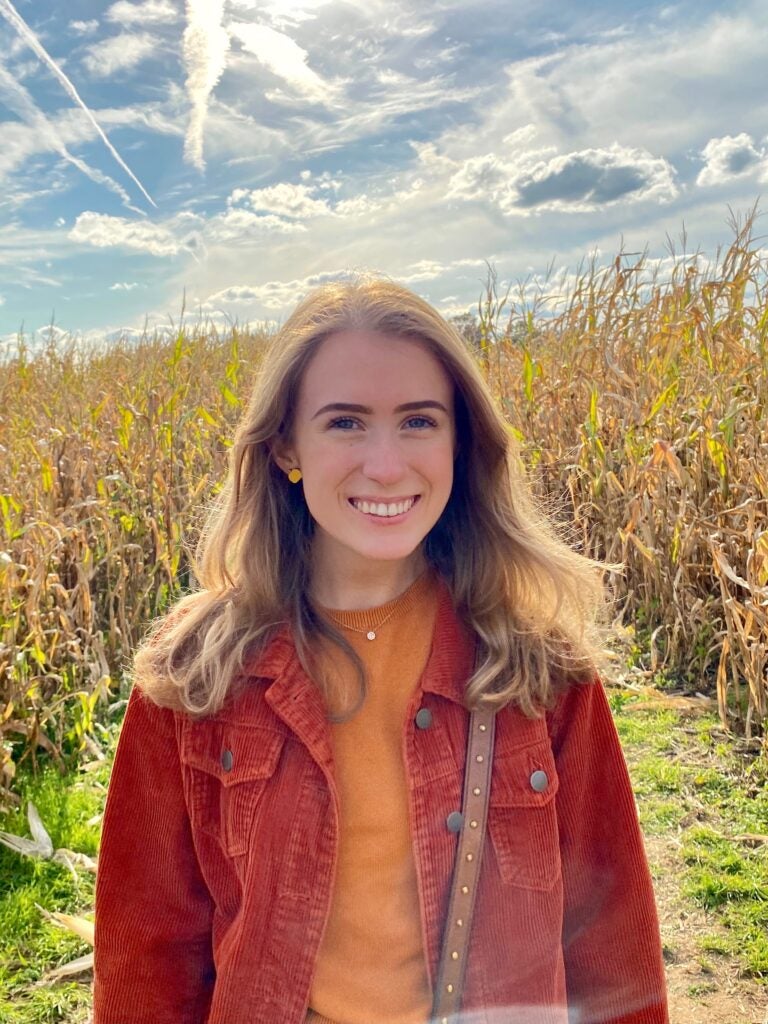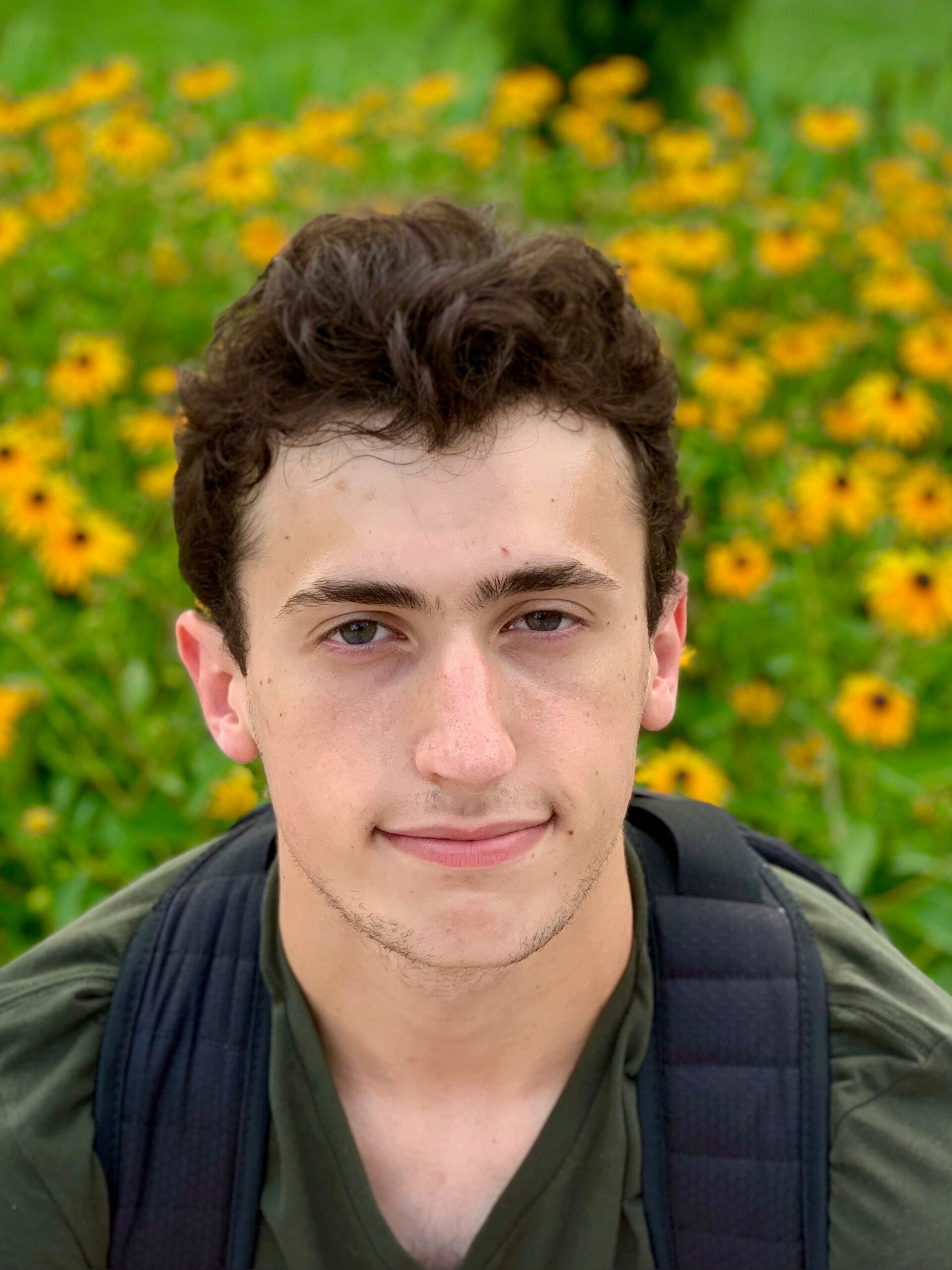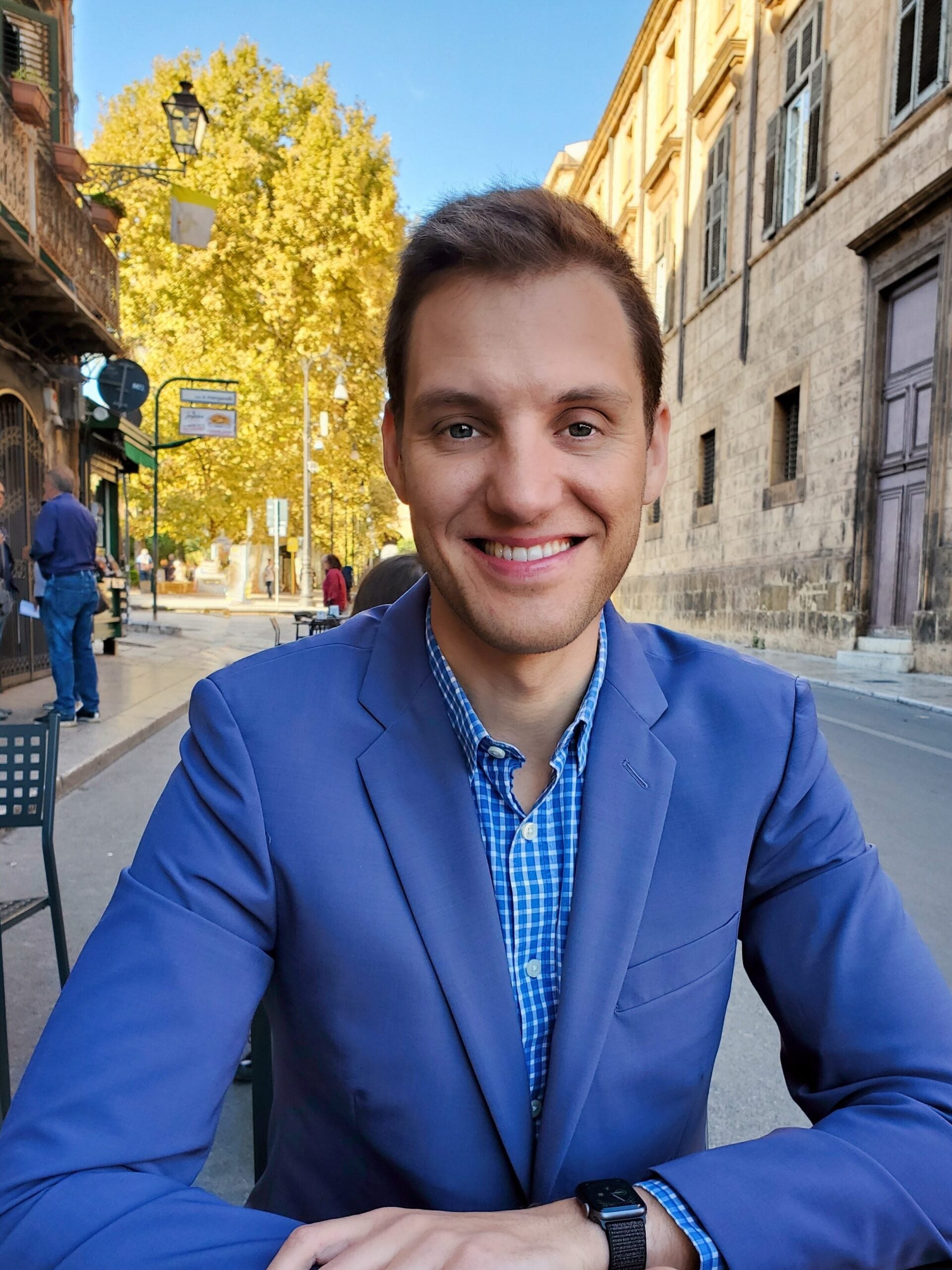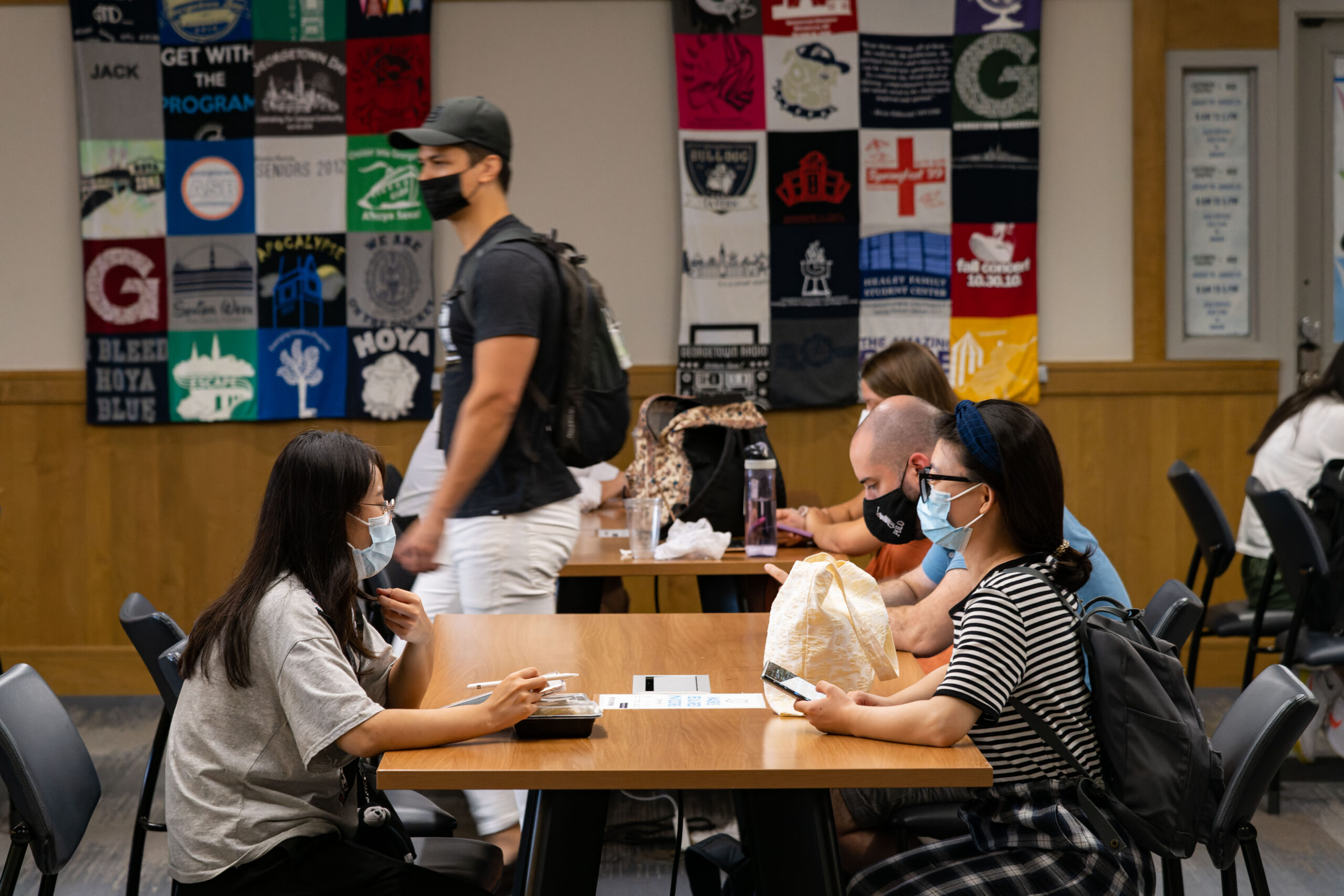Maureen Tibbetts (C’21) and Adam Epstein-Shuman (C’22) Contribute to Happiness Research on Impact of Online Interactions During Peak of Social Distancing
At the height of social distancing in the United States, a team of researchers led by Kostadin Kushlev, Ph.D. and professor in the Department of Psychology, examined the effects of online interactions on individuals’ happiness. Undergraduates Maureen Tibbetts (C’21) and Adam Epstein-Shuman (C’22), who contributed to the study, found that while online social interactions with strong ties are associated with higher well-being, online interactions with strangers were related to lower well-being.
“Above and beyond other social and nonsocial activities, living arrangements, employment circumstances, personality traits and demographics, people who spent more time interacting with close contacts—in person or online—felt more socially connected,” says Kushlev. “In contrast, people who spent more time interacting with weak ties, specifically online, experienced greater negative affect, more stress and lower social connectedness.”
Valuing Virtual Happiness

Maureen Tibbetts (C’21)
Tibbetts joined Kushlev’s Happy Tech Lab as a research assistant in September 2019 at the beginning of her junior year at Georgetown. After the university’s campus closed in March of 2020, Kushlev asked Tibbetts to assist him and doctoral student of philosophy in psychology student Matthew Leitao with the creation of a survey about technology and well-being, which they launched in April of 2020.
Kushlev explains that the researchers wanted to capture this unique moment in history where all of society was socially distanced.
“The critical question that we wanted to address is in the absence of in-person social interactions, can we replace those at the same level with online social interactions and the answer is sort of,” says Kushlev. “People were able to reap some of the benefits of social interactions while interacting with close others online, but interactions with acquaintances and strangers online did not bring the same benefits as having them in person. We had to work quickly to capture this moment, and Maureen really stepped up to help make it happen.”
Tibbetts continued to work as a Research Assistant in Kushlev’s lab throughout the summer alongside Epstein-Shuman (C’22), who compiled data through a program called CueBiq, which relied on cell phone location data to create a stay-at-home metric and a social distancing metric.
“The program determined a phone user’s home based on where that individual spent the majority of their time, which formed the stay-at-home metric we were examining,” says Epstein-Shuman. “They also created a social distancing metric based on when two different devices came within reach of one another and stayed there for more than five minutes.”

Adam Epstein-Shuman (C’22)
Epstein-Shuman used this data to create a graph that showcased April 8, 2020 as the peak of social distancing in the United States. This was then compared to the survey results created by Kushlev, Leitao and Tibbetts that polled over 500 participants earlier that year.
Tibbetts conducted early analyses for the survey results, eventually writing the first draft of what would become the team’s manuscript, which was accepted to Computers in Human Behavior Reports this year.
The results indicated that spending more social time with close others in person predicted greater connection and more positive affect and interacting with close contacts online also predicted feeling more socially connected. By contrast, the survey results found that spending more time interacting with weak ties online predicted more stress and greater negative effects.
Kushlev says that though these findings indicate that online social interactions can serve as a temporary placeholder, they are not a full replacement for in-person interaction.
“The small interactions we have throughout a ‘normal’ day, be it with colleagues over the water cooler, or your barista or a passing stranger, have been documented to enhance our daily well being,” says Kushlev. “Despite the many benefits and conveniences of working from home, on average there is something that’s being lost and it’s not clear what the longer term consequences might be for well being and society more broadly.”

Kostadin Kushlev, professor of psychology
Leitao, who was third author on the paper and helped to mentor Tibbetts and was a Teaching Assistant to Epstein-Shuman, says that while it has not been proven that positive online interactions with friends can replace in-person ones, it is important “to ground the findings of this data in what it is being compared to.”
“There’s a lot of controversy around using your phones, social media or Zoom to replace these interactions that we have and we can’t definitively say whether phones affect us in one way or another,” he explains. “However if your option is being alone and not interacting with anyone, or reaching out to a friend via social media, reaching out will likely be a helpful positive experience.”
“On a personal note, having the ability to connect with family, friends and people in the Georgetown community helped me to not feel so alone during the pandemic as I had recently moved from Los Angeles and was not as familiar with the city or it’s people,” Leitao continues.
More on Mentorship
After graduating this past spring, Tibbetts accepted a job working with children using the principles of Applied Behavior Analysis. The alumna, who wrote the paper as her Honors Thesis for psychology and was the article’s first author, said that this experience allowed her to grow as a researcher and a writer with the help of her mentors Kushlev and Leitao.

Matthew Leitao, third-year doctoral student
“Writing the first draft of the paper was a little intimidating for me at first, but Dr. Kushlev guided me through the whole process and was such a spectacular mentor, and both Matt and Adam were incredibly helpful during the editing phase of the paper,” she says. “Dr. Kushlev and I consistently met via Zoom at least once a week throughout the spring and summer of 2020, and his guidance was invaluable throughout the entire process. He really believed in me as a researcher, and I am so grateful for all of his support throughout our time working together. The skills I learned while working in the Happy Tech Lab have put me in a great position to eventually apply to graduate school within the next couple of years.”
Epstein-Shuman is still working in Kushlev’s lab where he now conducts research as to whether Zoom features, such as cameras being off or on during meetings, make a difference in users’ engagement. Though he is pursuing a degree in pre-med, the senior says that he has greatly appreciated the opportunity to conduct research.
“Adam has been amazing because I could tell him to find some COVID data and he would not only do it, but be so enthusiastic and excited to do it and share his findings,” Kushlev says. “One of the most rewarding parts of research is collaborating with others, especially with students who are just first discovering research and are really excited about it.”

